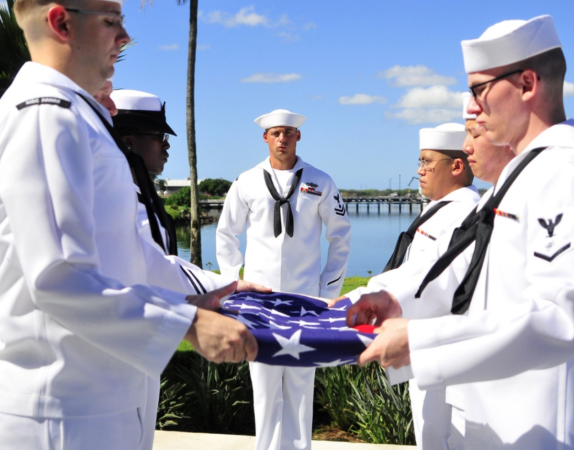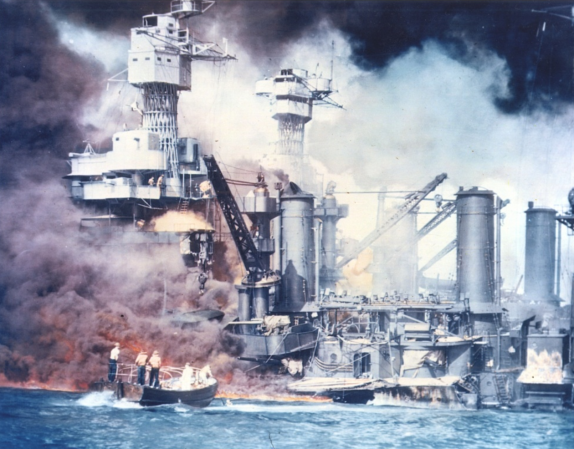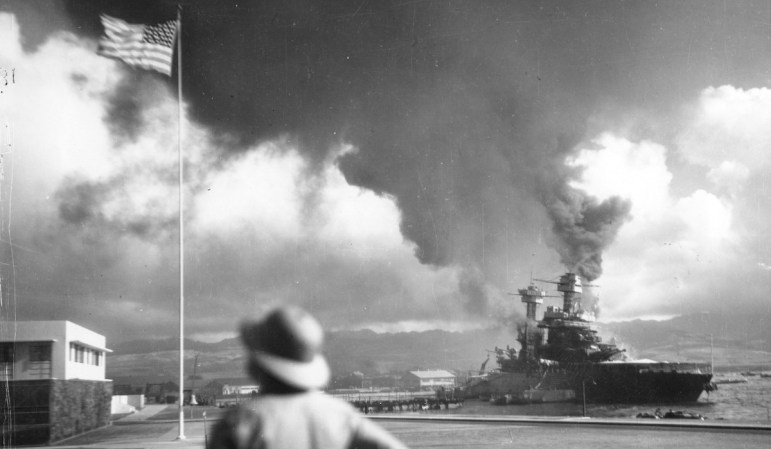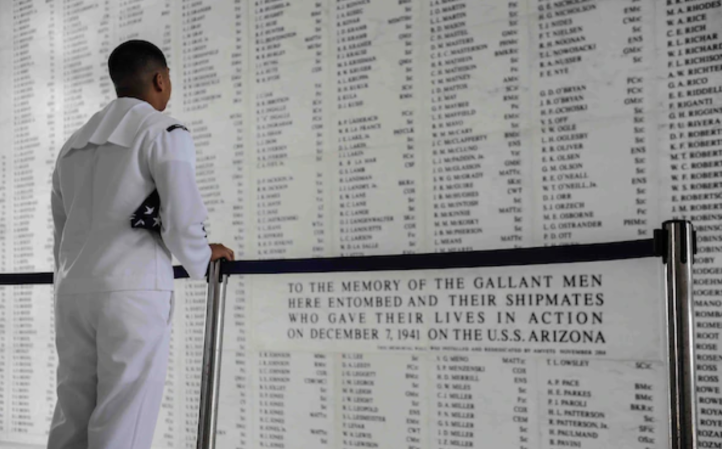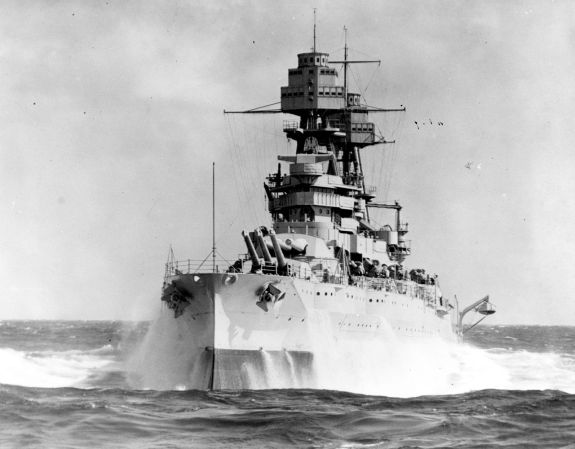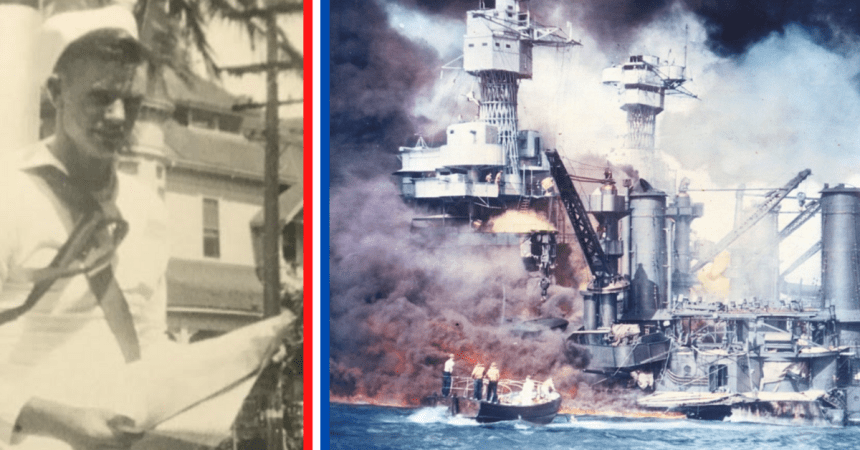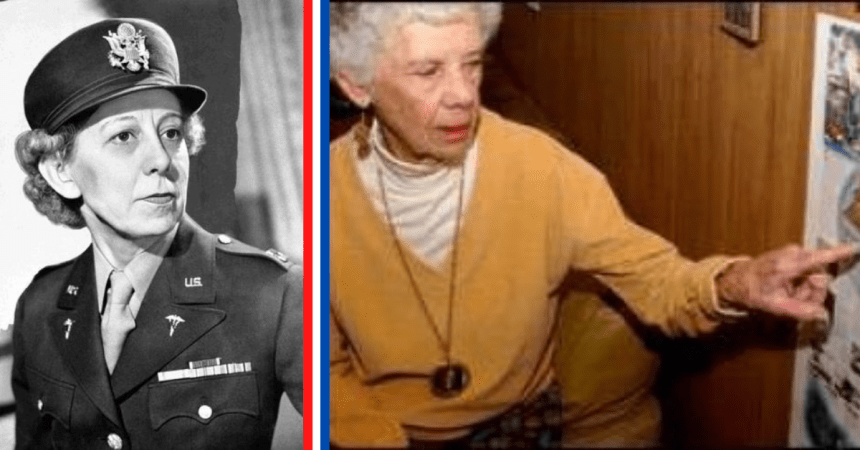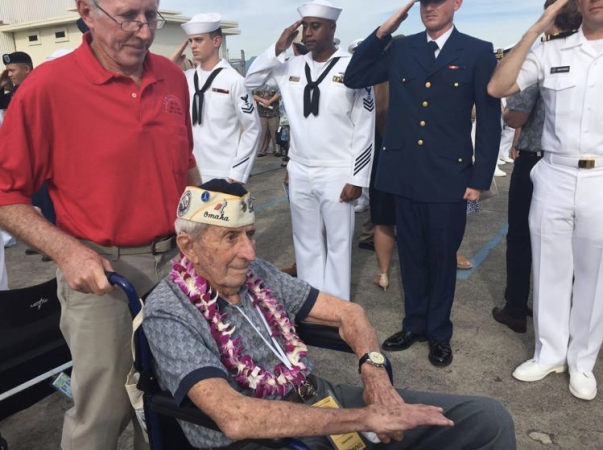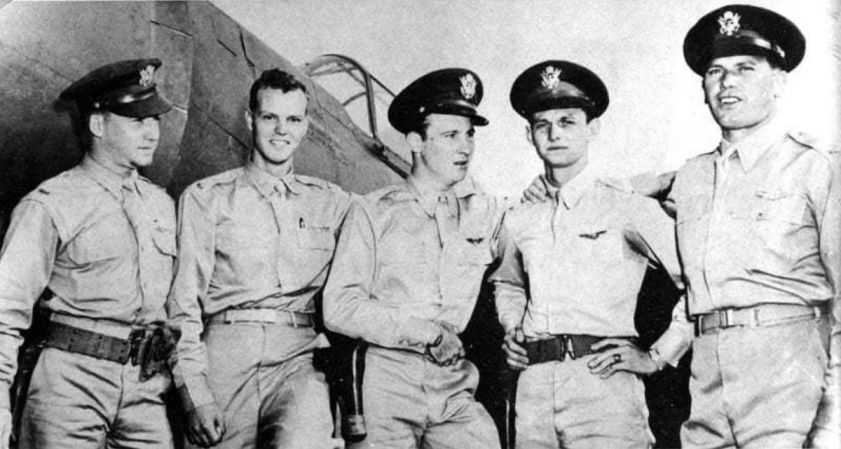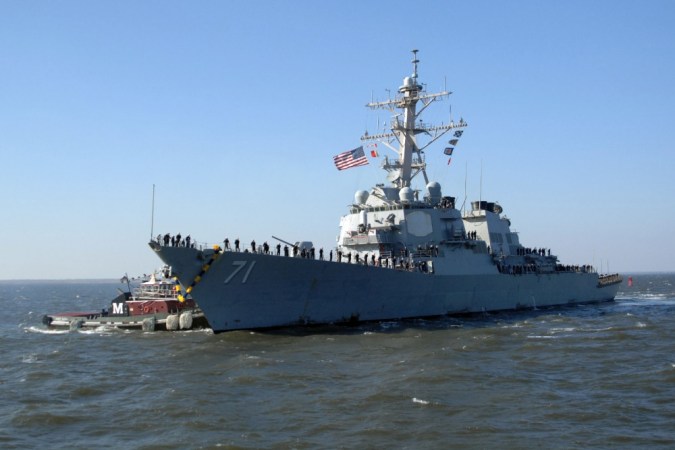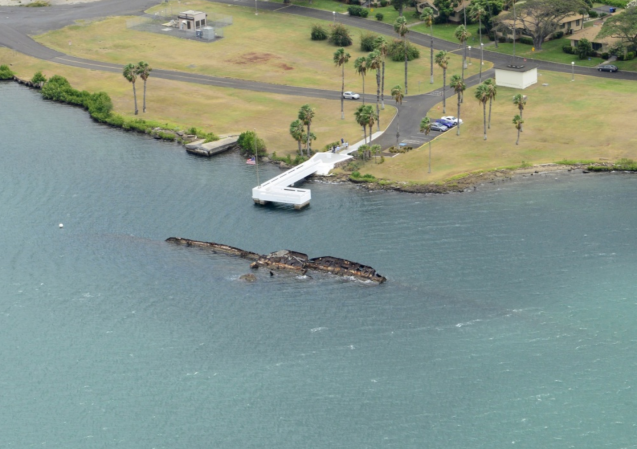The D-Day landings featured an immense fleet – including seven battleships.
One, HMS Rodney, was notable for being the only battleship to torpedo another battleship. However, one of the American battleships came to Normandy via Pearl Harbor, where she was run aground.
That ship was the battleship USS Nevada (BB 36). The Nevada was the lead ship in her class, the other being USS Oklahoma (BB 37). According to the Dictionary of American Naval Fighting Ships, when she was built, she had ten 14-inch guns (two triple turrets, two double turrets), 21 five-inch guns (many in casemates), and four 21-inch torpedo tubes.

The Nevada did not see much action at all (although nine sailors died from the influenza pandemic that hit in 1918) in World War I. In the 1920s and 1930s, she carried out normal peacetime operations.
On Dec. 7, 1941, she was moored alone on Battleship Row. When Kido Butai launched the sneak attack on Oahu, the battleship was hit by a torpedo, but her crew managed to get her engines running, and she made a break for the open ocean.
As she did so, the second wave from the six Japanese carriers arrived. The Nevada took anywhere from six to ten bomb hits, and the decision was made to run her aground.
The Nevada suffered 50 dead and over 100 wounded, but Pearl Harbor would claim two more casualties. In “Pearl Harbor: Why, How, Fleet Salvage and Final Appraisal,” it was reported that two men were killed by hydrogen sulfide on Feb. 7, 1942, while working to salvage the Nevada.

Nevada would return to Puget Sound for permanent repairs and refitting, gaining a new dual-purpose batter of eight twin five-inch gun mounts. She took part in operations to re-take the Aleutian Islands of Attu and Kiska from the Japanese, then she went to the Atlantic.
On June 6, 1944, she was part of the armada that took part in Operation Overlord, and continued to provide fire support until American troops moved further inland. In August of that year, she took part in Operation Dragoon, the landings in southern France.
She then returned to the Pacific, taking part in the invasions of Iwo Jima and Okinawa. Off Okinawa, she suffered damage from a kamikaze and from Japanese shore batteries.
The ship remained mission-capable, and she would later return to Pearl Harbor for repairs before re-joining the fleet to prepare for the invasion of Japan, stopping to pay a visit to a bypassed Japanese-held island.

After Japan surrendered, the Nevada was sent back to the West Coast, and prepared for Operation Crossroads. Painted a bright orange color to serve as an aiming point for the B-29 crew assigned to drop an atomic bomb, she got lucky.
According to the book “Final Voyages,” the B-29 crew missed her by about a mile — and she survived both the Able and Baker tests. She was later used as a target and sunk, with the final blow being an aerial torpedo according to the Naval Vessel Register.



